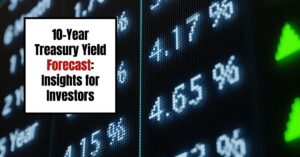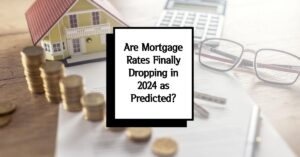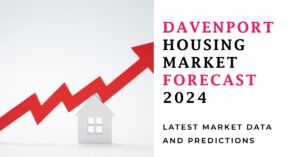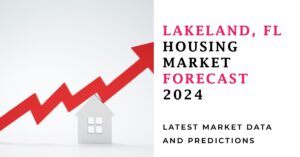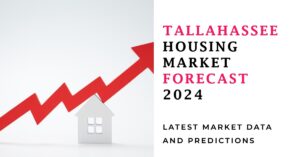Many people are worried about the state of the US economy in 2024, especially after the recent events that have shaken the world. Some experts predict that the US is heading towards a total economic collapse, while others argue that there is still hope for recovery. Let's try to answer the question: are we close to total economic collapse in the US?
Defining Total Economic Collapse
First, let's define what we mean by total economic collapse. Investopedia says a total economic collapse is “a severe and prolonged downturn in economic activity, accompanied by high unemployment, falling prices, and widespread poverty”. This is different from a recession, which is “a normal part of the business cycle that generally occurs when GDP contracts for at least two quarters”. A total economic collapse is much more severe and lasting than a recession.
Indicators of Economic Trouble
So, are we close to such a scenario in the US? Well, it depends on who you ask. Some indicators suggest that the US economy is in trouble, such as:
- The high inflation rate, which reached 7% in December 2023, the highest since 1982. Currently, it is 2.9% for the 12 months ending July 2024.
- The rising national debt, which surpassed $30 trillion in 2023, or about 130% of GDP.
- The widening income and wealth inequality, which has increased social unrest and political polarization.
- The ongoing effects of the COVID-19 pandemic, which has caused millions of deaths and disrupted many sectors of the economy.
- The environmental crises, such as wildfires, floods, droughts, and hurricanes, which have damaged infrastructure and reduced productivity.
- Manufacturing slowdown, with key indicators showing a decline in factory output and purchasing manager indices (PMI) signaling contraction.
- Persistent unemployment rates, particularly among younger job seekers and low-wage workers, leading to hesitance in consumer spending.
- Declining consumer confidence, reflected in survey results indicating that many Americans feel uncertain about their financial future and the economy.
- Weak retail sales growth, with July 2024 retail sales increasing by only 2.6% from last year, indicating sluggish consumer spending post-pandemic.
- Housing market stagnation due to rising mortgage rates and elevated home prices.
- Rising interest rates, as the Federal Reserve has increased the benchmark rate to 5.5% in its efforts to combat inflation, leading to higher borrowing costs.
- Increase in bankruptcies, with Chapter 11 filings rising by 25% in the first half of 2024 compared to the previous year, pointing to financial strain on businesses.
These indicators collectively paint a troubling picture of the current economic environment in the US, raising concerns about future stability and growth.
Indicators of Economic Resilience
However, other indicators suggest that the US economy is resilient and adaptable, such as:
- The strong consumer spending, which accounts for about 70% of GDP and has been boosted by stimulus checks and savings.
- The robust innovation and entrepreneurship, which has created new industries and opportunities for growth.
- The flexible labor market, which has allowed workers to switch jobs and sectors in response to changing demand.
- The global leadership and influence, which has enabled the US to attract foreign investment and trade partners.
- The diversified economy, which has reduced the dependence on any single sector or region.
Is the US economy close to an economic collapse in 2024?
The answer to this question depends on who you ask and what criteria you use. Some analysts believe that the US economy is on the verge of an economic collapse due to its unsustainable debt levels, its trade imbalances, its political polarization, and its vulnerability to external shocks.
They point out that the US economy has been artificially propped up by massive stimulus packages and low interest rates since the 2008 financial crisis, but these measures have only postponed the inevitable reckoning. They warn that once the stimulus effects wear off and the interest rates rise, the US economy will face a harsh reality check that could trigger a debt default, a currency crash, a banking meltdown, or a social breakdown.
Other analysts disagree and argue that the US economy is far from an economic collapse due to its diversified and innovative structure, its flexible and adaptive institutions, its strong and stable democracy, and its global leadership and influence. They acknowledge that the US economy has faced many challenges and difficulties in recent years, but they also highlight its remarkable resilience and recovery capabilities.
They claim that the US economy has shown signs of improvement and growth in various sectors and indicators, such as employment, consumer spending, manufacturing, services, housing, technology, energy, and health care. They assert that the US economy has the potential to overcome its current problems and emerge stronger and more competitive in the post-pandemic world.
What is an economic collapse?
An economic collapse is a term that is used to describe a situation where a country's economy suffers a sudden and drastic decline in its output, income, and wealth. An economic collapse usually involves a combination of factors, such as hyperinflation, currency devaluation, banking failures, social unrest, civil war, or external shocks. An economic collapse can have devastating consequences for the population, such as poverty, unemployment, hunger, disease, violence, and migration.
An economic collapse is different from a recession, which is a period of negative economic growth that lasts for at least two consecutive quarters. A recession can be mild or severe, depending on its duration and depth. A recession can also lead to an economic collapse if it is prolonged and severe enough.
What are the signs of an economic collapse?
There is no definitive way to predict when an economic collapse will happen, but there are some indicators that can signal that an economy is in trouble. Some of these indicators are:
- A sharp decline in GDP growth or a negative GDP growth for several quarters
- A high and rising inflation rate or a hyperinflation
- A loss of confidence in the national currency or a currency crisis
- A large and growing public debt or a sovereign debt crisis
- A banking crisis or a financial crisis
- A political crisis or a social crisis
- A loss of international competitiveness or a trade deficit
- A deterioration of living standards or a humanitarian crisis
These indicators can vary depending on the context and the nature of the economic collapse. For example, some countries may experience an economic collapse without having a high inflation rate or a large public debt. Conversely, some countries may have a high inflation rate or a large public debt without experiencing an economic collapse.
What are the causes of an economic collapse?
An economic collapse can be caused by various factors, both internal and external. Some of the common causes are:
- Poor economic policies or mismanagement
- Corruption or fraud
- Overdependence on a single sector or commodity
- External shocks or events
- War or conflict
- Natural disasters or pandemics
These causes can interact and reinforce each other, creating a vicious cycle that can worsen the situation. For example, poor economic policies can lead to corruption, which can lead to overdependence, which can lead to external shocks, which can lead to war, which can lead to natural disasters, which can lead to more poor economic policies.



